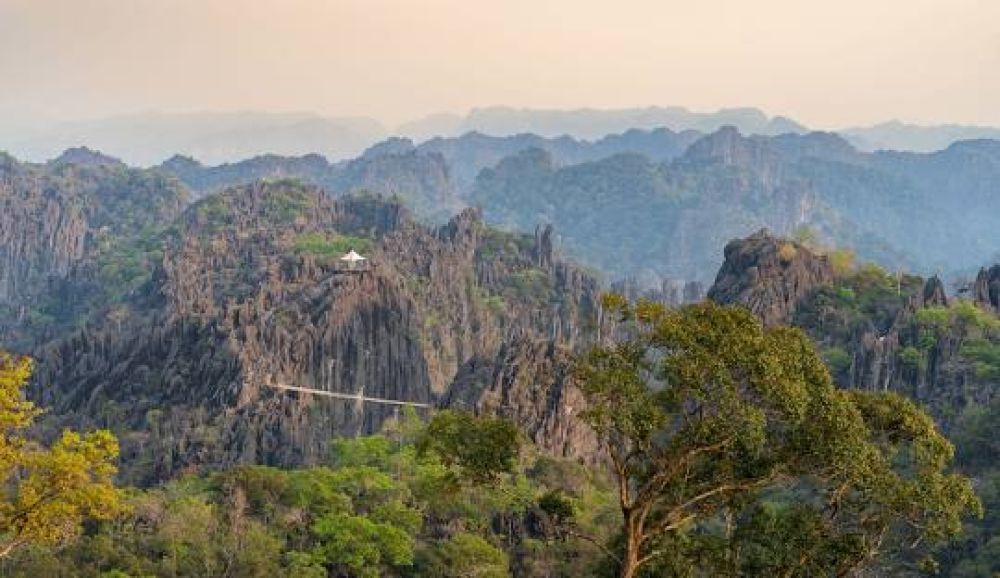

Thakhek, the capital of Khammouane Province in Central Laos, is steeped in history and has been gradually developing as a tourism destination. The town itself was established in the early 20th century during French colonial times, with many colonial-era buildings still standing today, which provide a quaint charm and a glimpse into the past for visitors.
The French influence is evident in Thakhek’s urban planning and architecture, particularly around the central plaza, where travelers can find an old French governor's house and a traditional market. With the construction of the Third Thai–Lao Friendship Bridge in 2011 connecting Thakhek with Nakhon Phanom in Thailand, tourism began to gain a stronger foothold. This bridge made access to Thakhek easier, leading to an increase in cross-border travel and cultural exchange.
Adventure tourism has become a significant trend in Thakhek; the infamous Thakhek Loop, a motorbike circuit that passes through spectacular limestone mountains, caves, and villages, draws in thrill-seekers and bike enthusiasts. This has played a major role in shaping modern-day tourism.
Trend-wise, Thakhek has become an embodiment of eco-tourism, offering visitors the chance to engage with nature while promoting sustainability. Key attractions such as Kong Lor Cave, a 7 km long limestone cave, can be explored via boat tour, emphasizing conservation efforts and eco-friendly tourism practices.
The Lao government has initiated several projects aimed at boosting infrastructure to support the growing number of tourists. Efforts to preserve the cultural heritage of Thakhek while providing modern amenities are a balancing act that local authorities continue to manage.
In recent years, Thakhek has seen a rise in boutique guesthouses, eateries, and tour operators catering to international tourists. It serves as a base for exploring surrounding attractions such as the Buddha Cave (Tham Pa Fa), which was only discovered in 2004 and contains over 200 Buddha statues.
Tourism has also encouraged cultural preservation, with local traditions, cuisines, and crafts being shared with visitors. Festivals and events such as the annual boat racing festival and Lao New Year celebrations attract both domestic and foreign tourists, further embedding tourism into the fabric of Thakhek.
Tourism in Thakhek is poised to expand further as Laos continues to open up to international markets. Sustainable tourism development is key to ensuring that Thakhek's natural and cultural assets remain unspoiled for future generations. With thoughtful planning and community involvement, Thakhek is set to remain a jewel in Laos’s tourism crown.